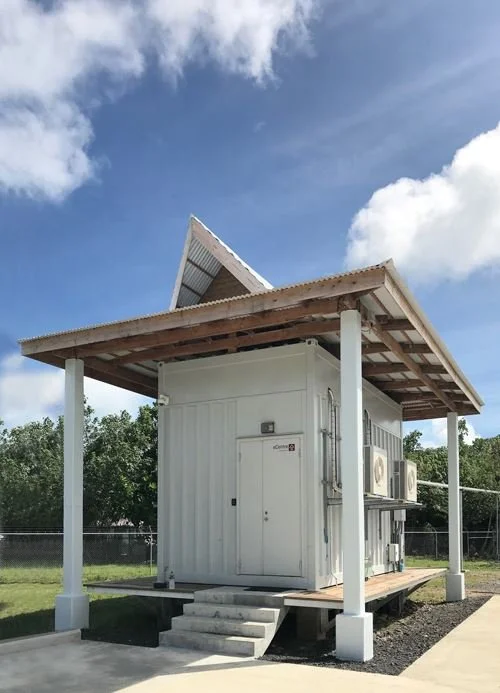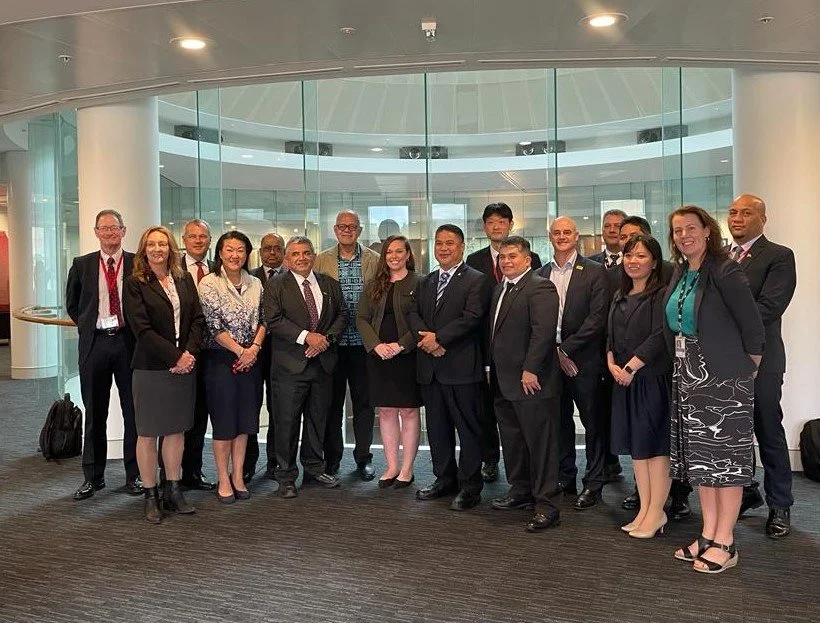The Project
The East Micronesia Cable project is a four-year project that commenced implementation in 2022, with an expected delivery date of late 2025. Cable landing stations will be constructed at landing points in each country to facilitate connection to the main cable. The project is a joint initiative of the Governments of the Federated States of Micronesia, Kiribati and Nauru, and is funded jointly by Australia, Japan and the United States.
Connecting East Micronesia
The submarine fibre optic cable stretches approximately 2250km from Tarawa to Pohnpei and will connect to the existing HANTRU-1 cable, which connects Pohnpei to Guam. The project will construct cable landing stations at landing points in each country.
Technical detail
Once completed, the East Micronesia Cable system will:
Comprise a main trunk cable connecting Tarawa to Pohnpei with branches to Nauru and Kosrae .
Provide optical transmission through a Single Fibre Pair with Spectrum Sharing between the countries, and an initial provisioned channel capacity of 100Gbps per country. (The system will be capable of 10 Tbps.)
Connect into the existing Chuuk-Pohnpei Cable System, which will eliminate the need for an additional landing site in Pohnpei, and will also add resilience to the Chuuk-Pohnpei Cable System.
Land-based Infrastructure
Land-based infrastructure at each site will support the landing, capacity and use of the East Micronesia Cable and will comprise:
Cable Landing Stations (CLS) at each site to house all of the optical transmission equipment and power feed equipment for the submarine cable system.
Landing Points consisting of seaward ducts, Beach Manholes, and duct work to the CLS at each site.
Near Station Backhaul to existing duct work, to provide opportunities for local operators to connect to the submarine cable system at the CLS site.
Development Partners
The Governments of the Federated States of Micronesia, Kiribati, and Nauru (the EMC Countries) have accepted funding support from the Governments of Australia, Japan and the United States (the Development Partners) to deliver the East Micronesia Cable project.
The Development Partners will collaborate with the EMC Countries to ensure a fit-for-purpose submarine cable provides essential and improved telecommunications connectivity.
Australia, via the Australian Infrastructure Financing Facility for the Pacific (AIFFP), is taking the lead role in funding and coordination arrangements. The AIFFP has contracted nem Australasia Pty Ltd as the Project Coordination Unit to support the EMC Countries facilitate management of the overall project. The Project Coordination Unit comprises a team of specialists covering technical, legal, administrative, and environmental/social requirements of the East Micronesia Cable project.
Governance
A robust governance structure has been established, and includes key stakeholders involved in different levels of project governance.
The East Micronesia Cable Management Committee leads on project implementation. The Management Committee comprises a representative from each of the State-Owned Enterprises mandated by their countries (i.e. Federated States of Micronesia, Kiribati and Nauru) to develop and deliver the East Micronesia Cable project.
The Project Executive Board comprises senior government officials from all six participating countries (Australia, FSM, Japan, Kiribati, Nauru and the USA) and acts as an escalation point for issues that require joint resolution.
The Project Coordination Unit supports the EMC MC and funding partners with project implementation, including the provision of technical advice.
The Technical Implementation Working Group comprises representatives from the Development Partners of Australia, Japan and the US. The group is a mechanism to ensure the Development Partners are well coordinated in their funding support.






